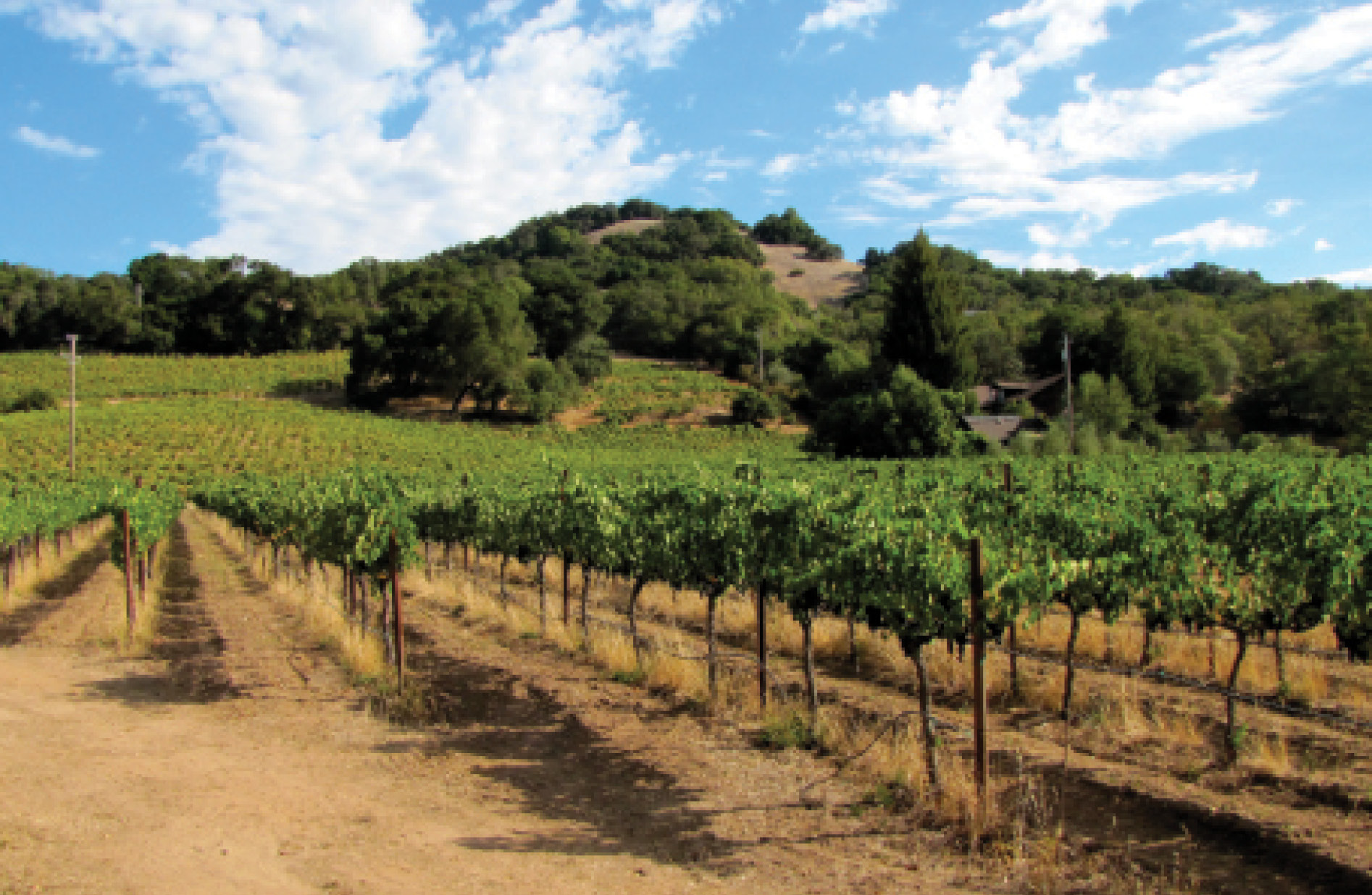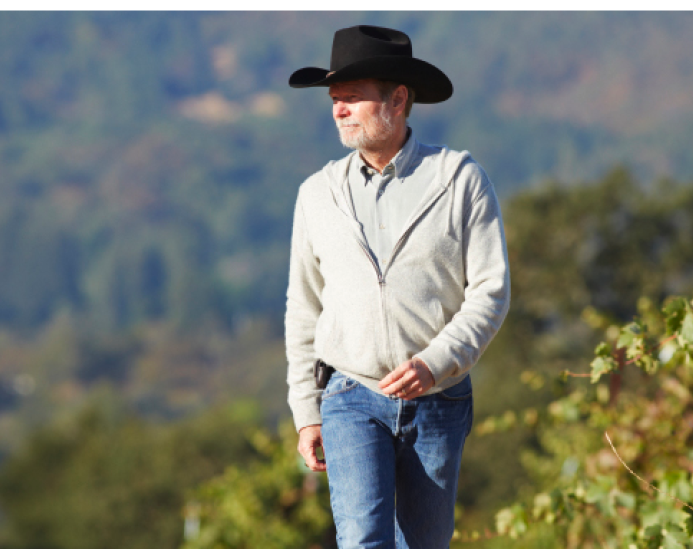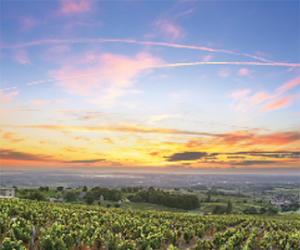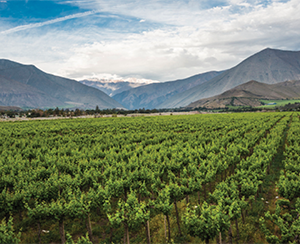
It’s been 40 years since Joel Peterson, the Californian labeled the Godfather of Zinfandel, founded the iconic Ravenswood Winery. In those days, Peterson didn’t own a bricks and mortar winery or vineyards — he was a long haired lab scientist making wine in his spare time at home. Today he’s a multi-millionaire winemaker and part of the biggest wine company on the planet, Constellation Brands, who bought Ravenswood in 2001.
Even for an industry where hard work is a given, Peterson’s journey from amateur home winemaker to Zinfandel star has involved struggles and disappointments that would have crushed and pressed lesser mortals: In 1978 Peterson couldn’t afford to bottle his wine and nearly gave up completely; it wasn’t until 1991 that Ravenswood was actually a serious bricks and mortar winery; and, even in the early 1990s, Peterson wasn’t making any profits and was still working as a lab scientist.
Wine as Tragic Opera
If you think these twists and turns in Peterson’s winemaking career sound like the plot of an opera, he would agree with you. In fact, the name, Ravenswood, Peterson says, was not only inspired by the ravens that seemed to taunt him as he harvested the grapes used in his first vintage, but also by the character Ravenswood in Gaetano Donizetti’s tragic opera, Lucia di Lammermoor.
“By 1978 I felt like I wasn’t actually going to make it,” confessed Peterson. “I didn’t have enough money, the wines were good but I couldn’t get them in the bottle. I had no idea how I was going to go to market and I went to the opera, I went to see Lucia.”
In the opera, Sir Edgardo di Ravenswood is the forlorn lover of Lucia.
“He [Edgardo] falls on his sword which, I suppose, would be comparable to what I was doing with the winery because I was going to go down with it I guess,” said Peterson.
But he didn’t go down, and today one of the most likely Zins you’ll encounter that’s decent quality at an affordable price is Ravenswood’s Vintners Blend. Peterson was instrumental in converting Zinfandel into a popular grape worldwide. However, his Zin record really rests on single vineyard wines that express a strong sense of site and continue to demonstrate the flavors possible with this quintessentially Californian grape.
Through four decades of winemaking, including the conversion of his operation into a multimillion dollar business, Peterson insists that his core philosophy and methods are
the same.
“I don’t empty out every vat myself anymore, so maybe the taste of my sweat is not in every bottle, but certainly the taste of my conscience is,” he said. “For me it’s about using traditional methods that ultimately are good and make wine that people like, but what’s more important for me is making a wine that is a true representation of place,” he adds.
In the Beginning
 The Californian’s wine education started very early. By age ten he was tasting, spitting, and thinking about wine flavors, encouraged by his dad, who ran a San Francisco wine club. However, he studied microbiology rather than enology and in the early 1970s lived in Berkeley and worked in cancer immunology research at a San Francisco hospital.
The Californian’s wine education started very early. By age ten he was tasting, spitting, and thinking about wine flavors, encouraged by his dad, who ran a San Francisco wine club. However, he studied microbiology rather than enology and in the early 1970s lived in Berkeley and worked in cancer immunology research at a San Francisco hospital.
He dabbled in small batch winemaking at home, using whatever grape and non-grape fruit he could find. But Peterson didn’t enjoy his cancer research job and knew he wanted to make a career of winemaking. “This [viticulture and winemaking] just caught the harmonious note I was looking for. In those days we talked a lot about Joseph Campbell [American mythologist, writer and lecturer] and following your bliss. This was definitely my bliss. I didn’t have any money but I was going to do it [become a commercial winemaker] come hell or high water, so I did.”
These years were formative for the future Ravenswood winemaker. Peterson threw himself into the growing Californian wine industry as a wine writer and consultant. He somehow found the time to join several wine clubs that met regularly to taste wines and also attended tastings given by brokers and distributors during his lunch hours and at night. Peterson estimates sampling about 500 wines per week.
The experience informed his winemaking. Peterson acquired a deep knowledge of how different people taste wine, educated his own palate and made indispensable industry contacts. David Darlington’s, Zin: The History and Mystery of Zinfandel, relates how, at the San Francisco Vintners Club, Peterson was known for his exceptional palate and taste memory for wines. Reed Foster, the club’s co-founder, is quoted in the book explaining how Peterson was, “the most accurate, consistent and perceptive taster in the entire group.”
The First Vintages
At about this time he met Joseph Swan at the Vintners Club. Swan was an early pioneer of Zinfandel and with his winery in Sonoma County, at the forefront of California’s budding boutique winery movement. Swan took Peterson on as an apprentice.
“From Joe, I learned to pick grapes by taste and to farm for less fruit, not more. That using wild yeasts may be tricky, but makes for more interesting wines. To ferment long and warm, and age in French oak,” said Peterson.
Throughout 1976, he spent vacations and most of his weekends helping at the winery.
After he’d started working with Swan, a winemaking turning point arrived. He crafted a Cabernet Sauvignon from grapes he’d sourced from Sonoma’s Alexander Valley: “That wine turned out really well,” said Peterson. “It was a very small amount, it was one barrel of wine, but it did catapult me over the edge. It gave me the confidence that I could do it [make wine] myself in a more commercial sense.”
In 1976 Peterson also made his first serious vintage — at Swan’s winery but using his own fermentation tanks. On the older man’s recommendation he went to Dry Creek Valley for his grapes and managed to contract 8 tons of Zinfandel from two growers who usually sent all their fruit to Gallo. Peterson picked the grapes himself, and as related on the Ravenswood Winery website, was harassed by two ravens who, in tune with Native American legends, he imagined advising him in the art of survival.
By 1978 his days of survival were starting to come to an end. The two founders of the Vintners Club — Reed Foster and Jerry Draper, a wine merchant, were impressed enough by Peterson’s Zinfandels that they backed him with a few thousand dollars of seed money. But the winery he called Ravenswood had no physical location, he didn’t own any vineyards and for labor he relied on friends to help for free.
“In 1978 I also didn’t have any money to bottle the wine I made, so the wine I made in 1976 I didn’t bottle until 1979 when I managed to put together a limited partnership with my soon-to-become partner Reed Foster. That at least made me enough money to keep me going and get my wine bottled.” He released his Zinfandel at $7.50 a bottle. At that time, said Peterson, the price was considered outrageous for an unknown wine.
Foster included Peterson’s first vintage of Dry Creek Valley Zinfandel in a wine tasting at the Vintners Club. Thirteen of California’s best Zinfandels from the 1976 vintage were to be tasted. The wines included Zinfandels by Joseph Swan and also another Zin expert, Ridge Vineyard’s Paul Draper. The two wines that were rated highest had a circular pattern of three ravens on their bottle labels and used grapes sourced from two vineyards in Dry Creek Valley.
“To have that acknowledgement from a group of people who actually knew and cared about wine made a huge difference in terms of how people perceived what I was doing,” said Peterson. “I wasn’t just another kind of winery out there making junky Zinfandel.”
But Swan expanded his winery and Peterson was forced to find somewhere else to make his wine. Until 1991, when Peterson acquired Haywood Winery, he moved his modest operation from winery to winery.
By this time Peterson was making other wines but with a focus on single vineyard Zins. However, their turn-around time of two to three years was presenting serious cash flow issues. Peterson needed a wine that was less expensive, with wide appeal that he could sell more quickly.
“I came up with Vintners Blend Zinfandel, using grapes from places like Lodi, Amador, and Mendocino,” said Peterson. “The grapes were less expensive, but I was applying most of the same techniques I was using for my upper red wines.”
So the wines weren’t left on the skins as long, came out of the barrels sooner, and were released 10 to 12 months after being bottled. One thousand cases of the first vintage were made in 1982. A few years later Ravenswood was making half a million cases.
Another boost came a few years later when wine critic Robert Parker released rave reviews of Ravenswood wines, declaring them, “First class – bold, dramatic and complex.”
The winery finally started to make a profit and in 1992 Peterson was able to quit his job as a hospital lab scientist. In 1999 he took Ravenswood public and then in 2001 it was bought by Constellation Brands for $148 million, making Peterson, the biggest shareholder, a multimillionaire. But to this day he’s remained the head winemaker and insists that his core winemaking method hasn’t changed.
“I have a core way I make wine, which is smaller lots,” said Peterson. “Certainly all the upper end wines are punched down by hand, I’m using all native yeast fermentations and I’m using all French oak.”
But it all starts in the vineyard. Of the single vineyards sourced by Ravenswood, the youngest is Dickerson, in the Napa Valley, that was planted in the 1920s. The oldest is Old Hill Ranch, in Sonoma Valley, established in the 1880s (search for either of these using https://www.historicvineyardsociety.org for more information). These vineyards are dry farmed with low production (at Old Hill between 1 and 2 tons per acre) and are usually a blend of varieties including Zinfandel. Many of the existing grapevines have survived since the vineyards were first planted.
Zinfandel: The Core and Truth of California
“They put a blend in the vineyard that’s compatible with site and that’s hugely important I think to the way the wine turns out and the flavor of the wines,” said Peterson. In fact, Old Hill Ranch, according to the traditional planting methods of the time, is about two-thirds Zinfandel and one-third is comprised of more than ten other varieties including Grenache, Petite Syrah, and Alicante Bouschet.
“They [the older Zinfandel single vineyards] really do represent the core and the truth about California. As good as Cabernet Sauvignon and Pinot Noir are in California, they’re really ersatz Bordeaux and Burgundy and they will always be compared to Bordeaux and Burgundy.”
Peterson says timing the harvest is something that Zin vineyard operators can frequently get wrong. For example, grapes are allowed to get too ripe imparting a raisin-like flavor to the wine.
making joel’s Zinfandel
When he crushes, depending on the source vineyard, Peterson says he sometimes leaves a few stems in, sometimes he doesn’t. Fermentation times vary according to the vintage, sun exposure, and skin thickness of the grapes, but typically skin contact time is between 10 days (Vintners Blend Zin) and two-and-a-half weeks (for single vineyard Zins).
Peterson always uses native yeast ferments. To make sure his yeast last the distance, he is very conscious of nitrogen levels. “Interestingly, if the grapes are picked at the right time, they generally don’t need nitrogen adds, but if they are picked quite ripe, they tend to be much more deficient in those microelements that are important for fermentation,” he said.
“I am definitely a warm temperature guy,” says Peterson, referring to his fermentation temperature. “I think that you don’t get good extraction, at least you don’t get the flavor profiles that I like, unless you get the temperatures up. We set our jackets for around 88 °F (٣١ °C) which means the cap gets to about 90 °F (32 °C) and we try to keep them there as long as we can.”
He says getting temperatures this high for small lot and home winemakers is very difficult. “So the wines have a really nice fruitiness associated with them but they rarely have the depth that you would like them to have.”
“The wines tend to be, at least the single vineyards, punched down twice a day, sometimes more, sometimes less. There’s no formulaic winemaking here, it is individual vats based on how the wines are tasting,” he said.
For the Vintners Blend he does more remontage, or pump overs, usually two or three times per day. Other wines are more individualistic.
After fermentation the wines are pressed and, unless they’re extremely tannic, press and free run juice are left together. Then it’s into a tank to settle for a couple of days before transfer to French oak barrels where single vineyard wines will stay for 18 months and Vintners Blend 10 months.
Ravenswood uses 10% new French oak for the Vintners Blend and 35 to 40% new French oak in the small production (usually about 1000 cases), single vineyard blends.
Peterson says French oak tends to be more assertive on the palate than in the aromatics of the wine and it fills out the palate in very positive ways, but it shouldn’t be used in excess. He also uses an oak grain which is appropriate for the wine’s structure. “For the wines that have more structure I tend to use tighter grained oak, and for the wines that have less structure I tend to use looser grained oak.”
“Oak should be like good perfume,” he adds, “It should be there but you shouldn’t really say, ‘Oh that’s oaky!’
Peterson doesn’t use American oak. “American oak is very aggressive and it really can have a very strong, planky, dill kind of character in the nose which really interferes with the subtlety of the wine,” he explained.
“There are a lot of Zinfandels, unfortunately, that carry American oak to excess and they really lose the subtlety and become average wines as opposed to becoming interesting, intellectually stimulating ones.”
After the barrel, Vintners Blend is filtered. Wine from the single vineyards, if they are healthy, go to bottle without any treatment.
No Wimpy Wines
The result of this winemaking process, according to the Ravenswood slogan, is “No Wimpy Wines.”
“The No Wimpy Wine thing originally came from my rebellion against White Zinfandel, which was kind of a sin against the nature of Zinfandel from my standpoint,” said Peterson. “What No Wimpy Wines means to me has more to do with skill and being precisely what you are. As opposed to tarting up your wines and trying to make them into something they aren’t or that the vines don’t represent.”
Even today, Peterson says he’s still experimenting, much like he was in his small lot days during the 1970s.
“We’re constantly working with our vineyards and constantly trying new oaks. We’re constantly looking at different lengths of time for extraction and ways of extracting things.”
If home winemakers are thinking of following Peterson’s ravens to riches example, he has some advice.
“I just say the same thing Joseph Campbell, said, ‘Follow your bliss.’ It will take you somewhere and if you’re enjoying what you’re
doing and you love it, you should just do it because it will ultimately be a great joy.”







